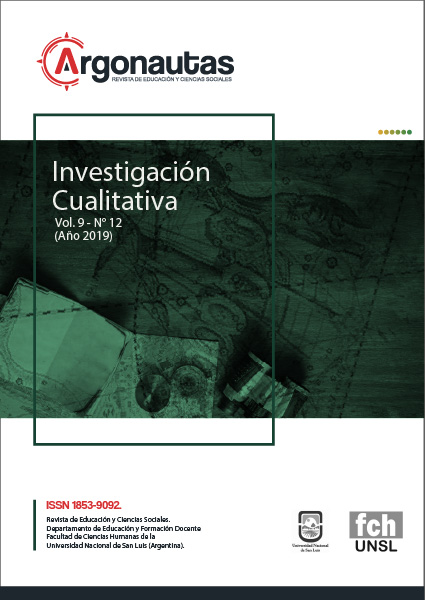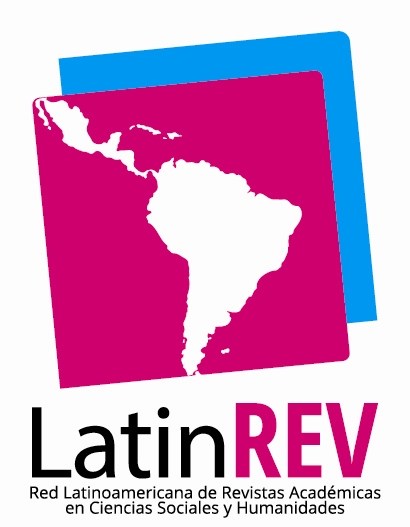The intercultural approach in reading activities present in textbooks for the teaching of english to teenagers (level a1)
Keywords:
Intercultural Approach, textbooks for the teaching of a foreign language-culture, teaching-learning, reading activities, English as a foreign language-cultureAbstract
This work presents a research project carried out at the Instituto de Formación Docente Continua San Luis. It aimed at analyzing and describing, in terms of the Intercultural Approach, reading activities found in textbooks published for the teaching and learning of English as a foreign language-culture (level A1), available in Argentina. The research was exploratory descriptive and followed a qualitative logic. Due to data saturation, the sample was made up of the reading sequences present in the first three units in seven textbooks. The results show that the inclusion of the Intercultural Approach has a secondary, superficial role in the reading activities analyzed, and that it does not work cross-curricularly. It also suggests that language and culture are presented as dissociated entities. The activites promoting the Intercultural Communicative Competence are personalization and search-for-information activities, and tend to be unidirectional, without promoting intercultural reflection.
Downloads
References
Abela, J. A. (2002). Las técnicas de análisis de contenido: una revisión actualizada. España: Fundación centro de estudios andaluces, Universidad de Granada.
Agdanli, A. (2013). “La dimensión intercultural de las actividades de los manuales de español de los negocios del nivel B2-C1 del MCER”, en Revista Internacional de Lenguas Extranjeras, N° 2, 7-30.
Bloom, M. y Eriksson, K. (2011). Análisis del contenido cultural de los libros de texto Buena Idea y Caminando desde una perspectiva intercultural. Suecia: Uppsala Universitet.
British Council (s.f.). Teacher knowledge database. Recuperado de: https://www.teachingenglish.org.uk/article/personalisation
Byram, M.; Gribkova, B. & Starkey, H. (2002). Developing the intercultural dimension in language teaching: a practical introduction for teachers. Consejo de Europa.
Caukill, E. (2011). “Learning English in an English Speaking World: examining opportunities for intercultural understanding and connectedness through representations of identities in English language textbooks”, en Dashwood, A. & Son, J. (Eds.) Language, Culture and Social Connectedness. Inglaterra: Cambridge Scholars Publishing.
Consejo de Europa (2002). Marco común europeo de referencia para las lenguas: aprendizaje, enseñanza, evaluación. Madrid: MECD y Anaya. Recuperado de: http://cvc.cervantes.es/obref/marco
Consejo Federal de Educación (2012). Núcleos de aprendizaje prioritarios. Educación primaria y secundaria. Lenguas extranjeras. Argentina: Ministerio de Educación de la Nación.
Consejo Federal de Educación (2011). Proyecto de mejora para la formación inicial de profesores para el nivel secundario. Argentina: Ministerio de Educación de la Nación.
Corbett, J. (2003). An intercultural approach to English language teaching. UK: Cromwell Press Limited.
Corpas Arellano, M. D. (2008). “La interculturalidad en el aula de lengua extranjera: intercambios, fiestas, tradiciones y costumbres de España y Australia”, en Revista Digital Práctica Docente, N° 9, CEP de Granada.
Deardorff, D. (2006). “The identification and assessment of intercultural competence as a student outcome of internationalization at institutions of higher education in the United States”, in Journal of Studies in International Education, N° 10, 241-266.
García Canclini, N. (2001). Culturas híbridas: Estrategias para entrar y salir de la modernidad. México: Paidós.
Golubeva, I. (2013). “Reflexiones sobre el componente intercultural en los manuales de ELE usados en el caso de los estudiantes húngaros adultos de nivel inicial y elemental”, Hungría: Universidad de Pannonia, Veszprém. Recuperado de: http://cvc.cervantes.es/ensenanza/biblioteca_ele/publicaciones_centros/PDF/budapest_2013/15_golubleva.pdf
Hamilton, D. (1990). What is a Textbook? Paradigm (3). Recuperado de: http://faculty.education.illinois.edu/westbury/paradigm/hamilton.html
Harmer, J. (2014). The Practice of English Language Teaching (5th Edition). Oxford: Pearson Education.
Hassan, A. & Raddatz, V. (2008). "Analysis of EFL elementary textbooks in Syria and Germany: cognitive, affective and procedural aspects in their inter-cultural context". Journal of Intercultural Communication, N° 17, 1-11.
Homayounzadeh, M. (2015). "An intercultural approach to textbook evaluation: a case of Topnotch and Summit series". International Journal of Applied Linguistics & English Literature, Vol. 4, N° 1, 199-208.
Koehler, K. (2007). Communicating intercultural competence in German language classes. An analysis of German and American textbooks. Tesis de Maestría. Alemania: Universidad Georg-August.
Lappalainen, T. (2011). Presentation of the American culture in EFL textbooks: An analysis of the cultural content of Finnish EFL textbooks for secondary and upper secondary education. Tesis de Maestría. Finlandia: Universidad de Jyväskylä.
Matsuda, A. (2002). “International understanding through teaching world Englishes”, en World Englishes, Vol. 21, N° 3, 436-440.
Méndez García, M. (2005). “International and intercultural issues in English teaching textbooks: the case of Spain”, en International Education, Vol. 16, N° 1, 57-68.
Ndura, E. (2004). “ESL and cultural bias: an analysis of elementary through high school textbooksin the western United States of America”, in Language Culture and Curriculum, Vol. 17, N° 2, 143-153.
Pasquale, R. (2014). Del manual en general al manual de lenguas extranjeras. Buenos Aires: Universidad Nacional de Luján.
Paricio Tato, M. (2005). "La dimensión cultural en los libros de texto de lenguas extranjeras: pautas para su análisis". Glosas didácticas, Revista electrónica internacional, Vol. 15, N° 2, 133- 144.
Rivers, J. (2007). An introduction to the concept of intercultural communicative language teaching and learning: A summary for teachers. Ministerio de Educación de Nueva Zelanda.
Siddiqie, S. A. (2011). “Intercultural exposure through English language teaching: An analysis of an English language textbook in Bangladesh”, in Journal of Pan-pacific Association of Applied Linguistics, Vol. 15, N° 2, 109-127.
Taki, S. (2008). “International and local curricula: the question of ideology”, in Language Teaching Research, Vol. 12, N° 1, 127-142.
Downloads
Published
Issue
Section
ARK
License
Copyright (c) 2019 Alicia Collado, M. Cecilia Arellano Lucas, Milagro Asensio , Romina Fessia, Lucía Quiroga

This work is licensed under a Creative Commons Attribution 4.0 International License.






